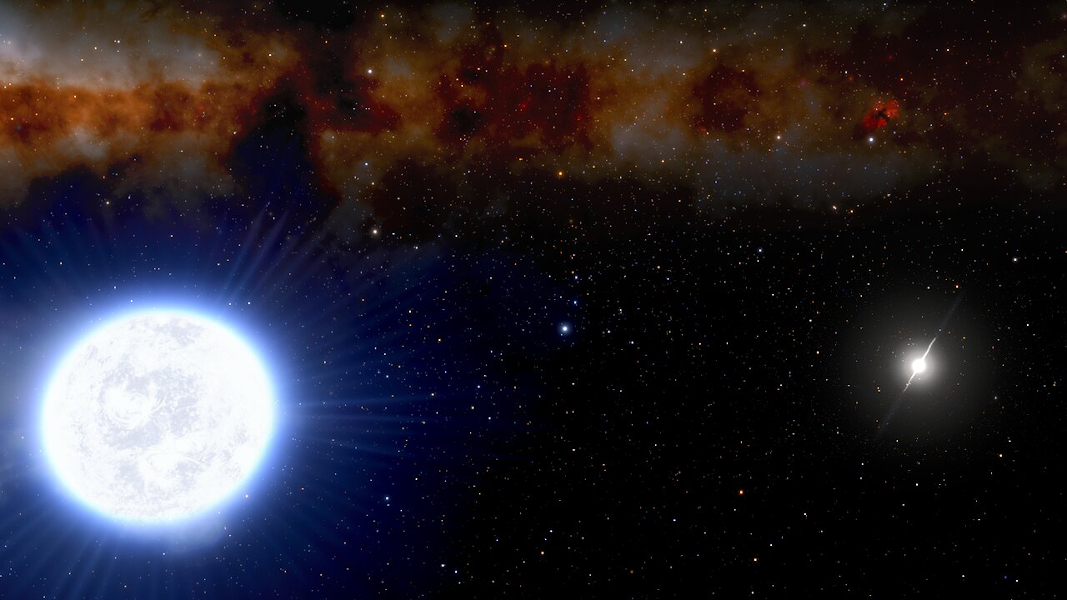
 Credit: NOIRLab; Fermi; NASA; Swihart et al. (2022)
Credit: NOIRLab; Fermi; NASA; Swihart et al. (2022)
Becoming a Spider
Fast-spinning neutron stars called millisecond pulsars have about as much mass as the Sun but spin at hundreds of revolutions per second, faster than the engine of a Formula-1 racer. Their rapid spins come from the accretion of matter from a companion star; this matter forms a thin, fast spinning disk around the neutron star, impacting one side of it and increasing its spin, similar to the way you might spin up a basketball with your hand. The millisecond pulsar strips almost all the mass from its companion, so the companion star usually ends up as an extremely low-mass white dwarf (an inert, earth-sized core of degenerate matter). Because so much mass is lost from the companion star, these millisecond pulsar binary systems were first called "black widow" binaries, or, as more types of them have been found, they are more generically known now as "spider" binaries to the cognoscenti. Spider binaries emit high-energy gamma rays, and the Fermi Gamma-ray Space Telescope, scanning the gamma-ray sky since 2008, has been instrumental in finding many of them. A newly-recognized millisecond pulsar, first seen as a previously unidentified gamma-ray source by Fermi, called 4FGL J1120.0Ð2204 in the Fermi catalogue, was recently identified as an unusual spider system using ground-based observations from the SOAR Telescope in Chile. The companion star in this system is more massive than the companion stars in most other spider systems, and much larger too. This means that astronomers have caught the neutron star in this system in the act of eating its companion star, making it the earliest such system to be discovered in the process of transitioning into a spider.
Published: January 24, 2022
<
HEA Dictionary ● Archive
● Search HEAPOW
● Other Languages
● HEAPOW on Facebook
● Download all Images
● Education ● HEAD
>

Each week the HEASARC
brings you new, exciting and beautiful images from X-ray and Gamma ray
astronomy. Check back each week and be sure to check out the HEAPOW archive!
Page Author: Dr. Michael F. Corcoran
Last modified Monday, 26-Feb-2024 17:20:01 EST


